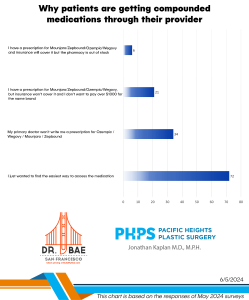 Chatbots are a type of chatbox but a chatbox isn’t necessarily a chatbot! A chatbox is that familiar box, typically in the lower right-hand corner of a businesses’ website that enables the consumer to interact with the company via a text interface, either during or after hours. These chatboxes can be “staffed” by real agents, enabling you to obtain the information you need from a real human being.
Chatbots are a type of chatbox but a chatbox isn’t necessarily a chatbot! A chatbox is that familiar box, typically in the lower right-hand corner of a businesses’ website that enables the consumer to interact with the company via a text interface, either during or after hours. These chatboxes can be “staffed” by real agents, enabling you to obtain the information you need from a real human being.
Alternatively, if there’s no human on the other side of that conversation, then you’re using a chatbot! A robotic or non-human interface that hopes to understand your natural language and provide you with the information you’re seeking.
But to those of us who’ve interacted with a chatbot before knows, the days of feeling like you’re having a conversation with a human is still not realized. The typical chatbot conversation starts with the chatbot asking how they can help you, hoping and praying you’ll use a keyword the bot recognizes! Almost immediately, it’s clear that a bot using natural language processing can’t help you with your problem. At that point, the chatbot hands off the conversation to a live agent.
A live agent can be expensive. At the very least, it’s another full-time employee. While a company like American Express can afford to staff their own chat platform, most small businesses, like medical practices, outsource their chat capability to 3rd party vendors.
Chatbox vs Chatbot
Chatbox vendors try and keep their costs low, but knowledgeable live agents can be understandably expensive. So we’re left with a conundrum. Live chat that can more ably answer an online visitor’s question but is potentially costly, vs a chatbot that’s more economical but has a tough time answering anyone’s questions?
The answer? A chatbot that specializes in one topic and limits the user to a finite number of choices to ultimately provide them with the answer they seek. By focusing on only one topic, we reduce the complexity of options provided to the consumer, increasing the likelihood they end up where they want.
Take for example, the chatbot I use on my website. Our chatbot doesn’t try and answer every question the user may have. It answers the one question everyone has: “how much does “it” cost?” With ‘it’ being the cost of any procedure or service we offer.

To be clear, that means the chatbot won’t answer any questions other than price. However, when it comes to questions regarding price, it answers the question correctly every time! If the user wants to know about the recovery process, they’ll have to read about it on one of our dedicated procedure pages. If they want to know how to book a consult, hopefully they’ll notice our online booking tool under the Contact tab. At the risk of sounding redundant, if they want to know about anything other than price, they’ll have to look for the answer elsewhere on our site. But if they want to know about cost, we’ve got them covered with either our streamlined “quick and dirty” chatbot or our Price Estimator that offers more information like videos, before and after photos or the ability to purchase non-surgical services online.
What do visitors prefer?
Once our chatbot went live back in September of 2020, we immediately started collecting data. We wanted to know if most interactions came through our website submission form, through our Price Estimator or our pricing chatbot? All three tools have one thing in common: their primary purpose is lead generation, and as such, all three require contact information to work.
In other words, if the user wants to ask a question through our website submission form, they have to enter their name and email address. If they want to check pricing on our more elaborate Price Estimator, they have to either create an account with their email address or sign in using their Google or Facebook accounts. And with the pricing chatbot, they have to enter their name, email address and ZIP code. But no matter what, we capture their contact information for immediate follow up or add them to our email marketing database for future email marketing.
So what did we find? The graphs below highlight some important findings. The overwhelming majority of leads came through the Price Estimator that’s been on our site for years. It’s possible there’s more traffic to this page because of the large number of links to this page in cyberspace.

But notice an interesting evolution in the second figure. Users were starting to use the pricing chatbot more towards the end of the study period. They’re embracing the no-frills chatbot because they’re able to get an estimate sent to their inbox in fewer steps than the Price Estimator. The chatbot, which resides on our homepage, may also be better at capturing the visitor’s attention, compared to the Get A Quote Now call-to-action button that requires users to navigate to the Price Estimator on a separate pricing page. The chatbot may overtake the Price Estimator as our strongest lead generation technique in the months to come.

Which is the best automated tool for lead generation?
The graph below provides a head-to-head comparison of the three lead capture techniques on our website. Included are the number of leads and subsequent consultations generated by those leads.

It would seem that the website submission form is most productive in that two consultations from 18 inquiries were booked. But generating leads and booking consults is a numbers game. The more leads, the more consults. And generating only two consults from the website submission form, regardless of the ratio of leads to consults, is woefully inadequate as a business model.
One could argue the reason we had so few submissions through our website submission form is because they require the user wait on a manual response from our team. In this instant gratification-obsessed world, consumers are more likely to use a more automated option on our website. Like the Price Estimator or chatbot to get an instant quote.
It’s very exciting to see online visitors’ relatively quick adoption of new technology like a pricing chatbot. And not only for us, but also for Netflix reality star Dr. Sheila Nazarian, whose chatbot generated 121 leads in its first 24 hours on her site.
Seeing so many new leads fill our sales funnel, thanks to our chatbot team member, gives me hope that as we exit this pandemic, the future of aesthetics will come out stronger than when we entered.
Click here for the original blog post written by Dr. Kaplan for BuildMyBod.




